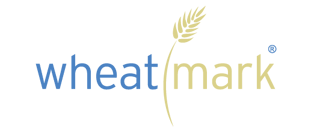As president of the Arizona Book Publishing Association for the last two and a half years, and as head of the self-publishing firm Wheatmark, www.wheatmark.com, for the last eight years, I’ve talked to hundreds of publishers and authors, and read countless articles and studies on the publishing industry. This experience has made it clear to me that a significant transition is taking place in the book publishing industry. The era of the major publisher and the bestseller is ending, and the era of the independent publisher and the micro market is beginning.
Major publishers’ titles account for an ever decreasing portion of overall book sales in the United States, while independent publishers’ titles and self-published titles account for an ever increasing portion. Similarly, bestsellers constitute an ever smaller portion of the total publishing pie, while books selling in the few thousands or hundreds account for an ever larger portion.
This shift is the result of the advent of two major new technologies: the Internet and inexpensive digital short-run printing.
The Internet contributes to this change by allowing for infinite virtual shelf space for books online. Major publishers’ business models are built around the assumption that there is a limited amount of shelf space in bookstores. Major publishers compete vigorously with one another for this finite shelf space. In their worldview the publisher that gets its books placed in the bookstores wins, the publisher that doesn’t loses. This has, over the years, resulted in publishers making major financial concessions to bookstores and bookstore chains, including low list prices, huge discounts, 100% returnability, and high prices for premium in-store placements. The result: bookstores and bookstore chains have become the least lucrative place for publishers to sell books. Happily, thanks to the Internet, independent publishers and self-publishing authors are no longer limited to the shelves of brick-and-mortar bookstores. Even self-publishing authors with only one title can sell directly to readers. Major online bookstores like Amazon.com can carry every title that every brick-and-mortar bookstore carries plus every title any publisher or self-publishing service publishes.
Inexpensive digital short run printing technology contributes to the change in the publishing landscape by allowing publishers to publish more titles, and by allowing more authors to self-publish. Major publishers’ business models are built around the assumption that all print runs need to be fair-sized and cost tens of thousands of dollars. Major publishers, therefore, eschew books appealing to small or micro markets for fear that they will be stuck with unsold inventory. Thanks to digital short run printing technology, publishers can now afford to publish more titles in shorter incremental runs without this risk, and more authors can afford to self-publish.
Independent publishers and self-publishing authors can profitably publish books that appeal to micro markets however small or geographically dispersed. And they’re doing it – the number of books published has skyrocketed in recent years. And, there is evidence that book buyers are changing their buying habits as a result of having a broader range of choices. The number of weeks the average bestselling novel remains on the bestseller list has declined precipitously in recent years. Just as big hits are becoming less frequent and less “big” in the film, television, and music industries, so bestsellers are taking up an ever dwindling portion of the total book publishing pie. Bad news for the major publishers. Good news for the little guy.

